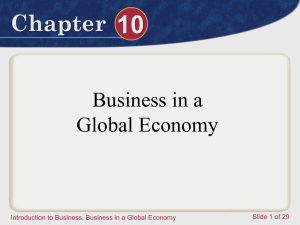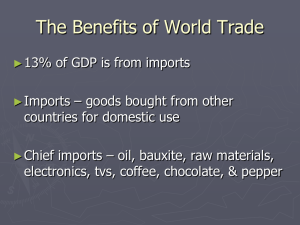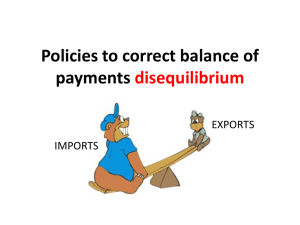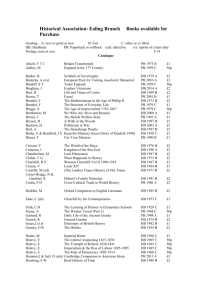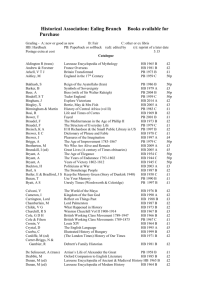Exchange Rate Systems
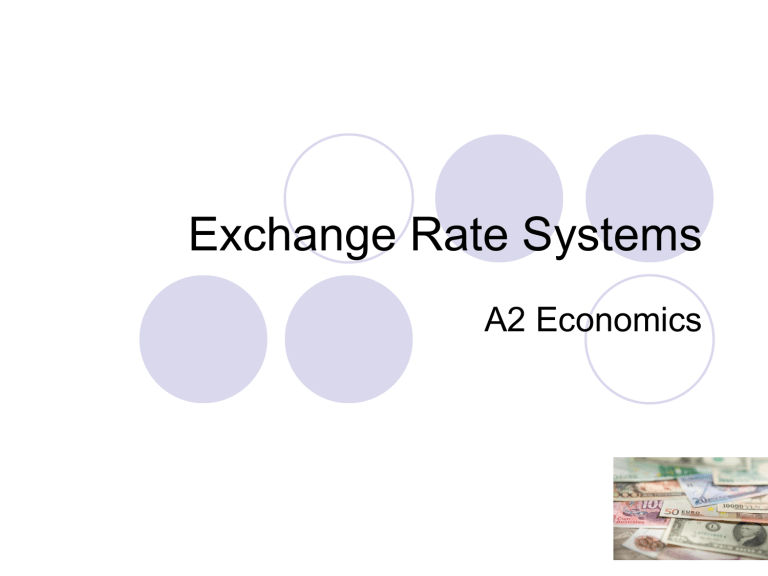
Exchange Rate Systems
A2 Economics
What are exchange rates?
The rate at which one currency can be converted (bought or sold) into another currency is known as the exchange rate.
Normally expressed in the terms of one single currency against another.
Exchange rate systems
Freely floating exchange rate
= a system whereby the price of one currency is determined by the forces of supply and demand
Fixed exchange rate
= an exchange rate system in which the value of one currency has a fixed value against another countries
Semi-fixed exchange rate
= an exchange rate system that allows a currency’s value to fluctuate within a permitted band of fluctuation.
Freely floating exchange rate
The value of the pound is determined purely by market demand and supply of the currency
Both trade flows and capital flows affect the exchange rate under a floating system
No target for the exchange rate is set by the Government
There is no need for official intervention in the currency market by the central bank
Sterling has floated freely on the foreign exchange markets since the UK suspended membership of the ERM in September 1992
Demand and Supply
There are 3 main reasons why foreign exchange is bought and sold:
1.
International trade
2.
Short-term capital flows
3.
Long-term capital movements
Demand and supply of Dollars
Price of
$ in £’s
50p
S of $ (US)
D for$ (UK)
0
D & S of $
Price of the $ is 50p - $1 will exchange for 50p
$1 spent in the US will purchase 50p's worth of UK exports
50p, spent in the UK will buy $1's worth of US imports
Increased demand for $’s
Price of
$ in £’s
1
50p
S of $ (US)
D1
D for$ (UK)
0
D & S of $
Demand for the $ ↑ - D - D1 - price of the $ ↑ from 50p to £1
$ is now worth more, it has appreciated in relation to the £
£ has depreciated - worth less in terms of the $
Changes the prices of imports and exports:
Now $1 will buy £1 of UK exports – previously it only purchased 50p
Price of UK goods in the US has fallen
When a currency appreciates exports ↑increase in price, imports ↓ in price
When a currency depreciates exports ↓decrease in price, imports ↑ in price
Advantages of a freely floating system
Reduced need for currency reserves
Freedom for domestic monetary policy
Useful instrument for macroeconomic adjustment – controlling AD and inflation
Partial automatic correction of a trade deficit
Disadvantages
Uncertainty
Lack of investment
The floating exchange rate can be inflationary if price stability not prioritised.
Does a floating rate automatically remedy a trade deficit?
Evaluation
The extent to which a floating system is advantageous for a country depends upon the price elasticity of imports and exports.
Marshall-Lerner Condition – BoP will only improve if imports/exports are price responsive.
Fixed exchange rate
The government makes a commitment to a fixed exchange rate
The exchange rate is pegged against another currency
There are no fluctuations from the central rate
System achieves exchange rate stability through the buying selling of its own currency and changes in interest rates.
However this may be at the expense of domestic stability
Advantages of a fixed exchange rate
Encourages trade and investment as less risk of fluctuations
Reduces the need for hedging and so the cost of international trade
Disciplines on domestic producers
Disadvantages
Large holdings of foreign exchange reserves needed
Loss of freedom in your internal policy
International retaliation
Semi-fixed/semi-floating exchange rates
The exchange rate is given a specific target
The currency can move between permitted bands of fluctuation on a day-to-day basis
Exchange rate becomes an target of economic policy-making (interest rates are set to meet the exchange rate target)
The Bank of England might have to intervene to maintain the value of the currency within the set targets if it moves outside the agreed range
Re-valuations are seen as a last resort
Examples of semi-fixed systems
Adjustable peg systems – short term: currencies are fixed and do not change in value, long term: the value of the currency can change if economic circumstances dictate.
Crawling peg systems – exchange rate is fixed however mechanism allows the band to rise and fall regularly over time.
Exchange rate band systems – exchange rate floats freely within a permitted band of fluctuation.






